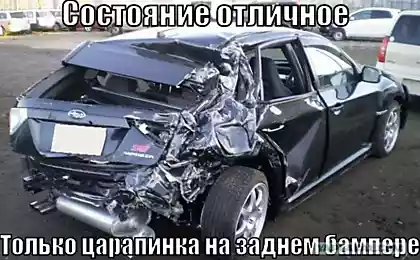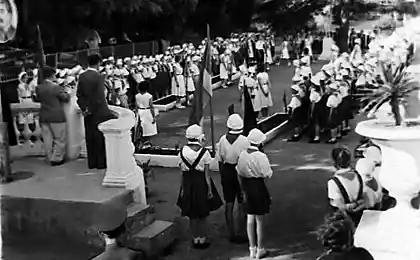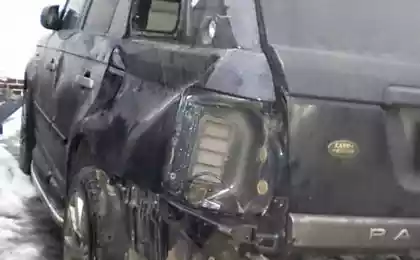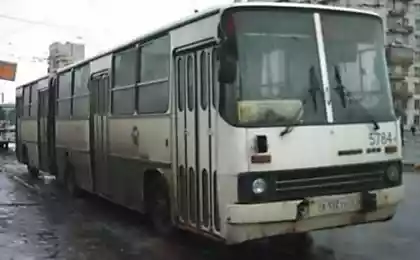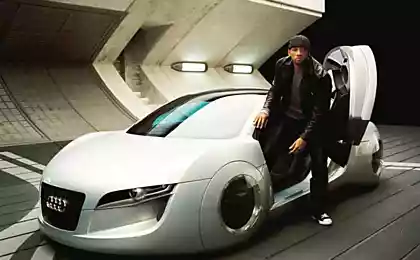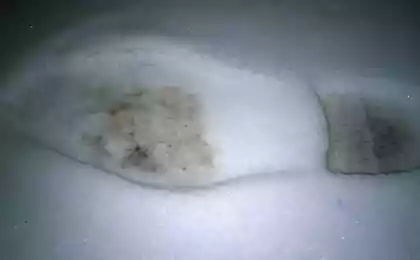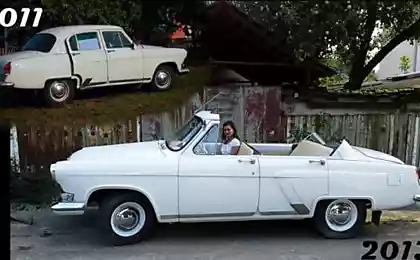1762
International Ikarus (14 photos)
Guess the country in which to make a photo?

Today, once again came across a photo that made me strongly think - What did the bus from socialist Hungary in the streets of San Francisco in 1978? It was found that almost the same as that on the streets of New York, Portland, Milwaukee, Houston and even Honolulu - carrying passengers. Strange but true - so familiar to us from childhood accordion buses Ikarus brand in the 80s made in the United States and Canada.

Ikarus produced for the US market from 1980 to 1986, the joint venture created by the Hungarian Ikarus and American Crown Coach Corporation. While Icarus was one of the largest producers of passenger buses in the world (13 000 units per year) and released three times more cars than all US companies combined. For the US market produced 286 Ikarus made on the basis of 280-th model, known, perhaps, every resident of Russia. It was sredneprivodny articulated bus is popularly referred to as the "accordion". There were produced 243 bus models Crown-Ikarus 286.
Here I have a little get well - in San Francisco and New York, the bus only demonstrated and passed the tests in regular passenger transport was not used. This is a demo bus, the Hungarian assembly in San Francisco in 1978. He is the first picture.
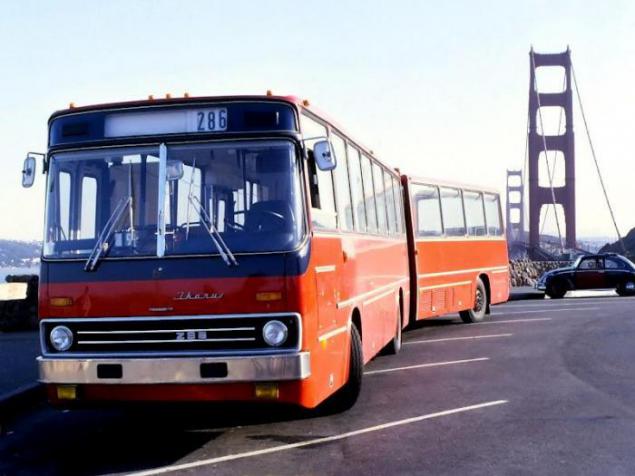
Agreement on the establishment of the joint venture was signed by the companies in 1978, and the first order for the Hungarian bus was placed in November 1979. The body and chassis were produced at a factory in Hungary, while all other components including the engine, transmission, axles, brakes and so on were US-made. Only the first batch of buses was almost entirely collected in Hungary sent from American components. Then the assembly line at the plant was organized by Crown Coach in California. On buses install special equipment for planting-disembarkation of persons with disabilities. A large number of US parts and assembly production in the United States summed buses under the law, "Buy American", by which all procurement carried out by the budget, preference was given to goods produced in the United States.
Ikarus wanted also to organize production and sale of trolleys on the basis of the 286th model, and even sent to the United States two test sample 280T3, which were shown in 1980 and 1981 in San Francisco, Seattle and Mexico City, but no order for them not arrived, and production was not organized, and the prototypes back to the factory in Hungary.
Ikarus 280T3 on trial in San Francisco.

On the buses set Cummins engines and automatic handed Allison. 55 machines were installed transmission Voith. In the mid-80s, to reduce operating costs, engines are replaced by Detroit Disel. Buses are available in two versions - 17 and 18 meters long, with two or three doors. The maximum number of seats was 73. Unlike the bus comes to the USSR seats were installed in two rows on each side.
Ikarus American assembly (to Portland) on trial in New York, in the territory of the bus fleet of Queens Transit in 1981.

He's on the video.
The buses were purchased by transport companies from nine different states. The first 15 vehicles were delivered in 1980 in Louisville, Kentucky.

The largest batch of 87 vehicles was ordered by the transport company in Portland, Oregon. They put the customer in 1981-82. Portland was the only city where delivered three door versions.
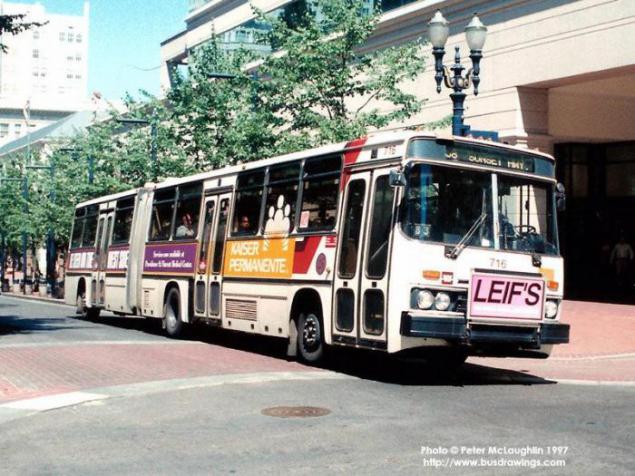
In Houston, Texas, it was purchased 50 buses Crown-Ikarus.

In Milwaukee, Wisconsin, sent 40 cars.

Buses also delivered to the county of Santa Clara, California - 15; San Mateo, CA - 10; Jacksonville, FL - 9; Albany, NY - 8; Honolulu, Hawaii - 8. After the sale of the transport companies in the secondary market, there were buses and in other US cities.
Bus from Honolulu, Hawaii.
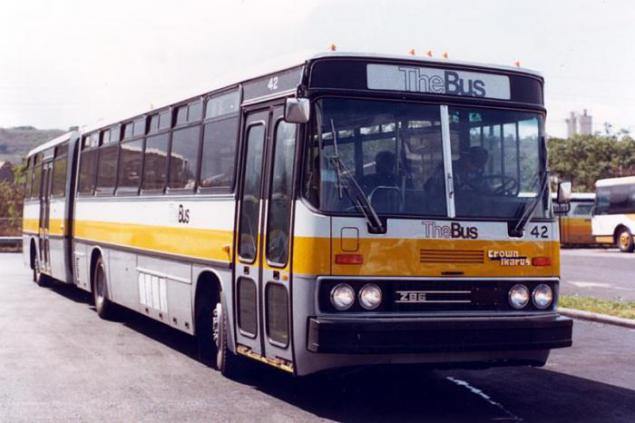
Crown-Ikarus in Albany, New York.
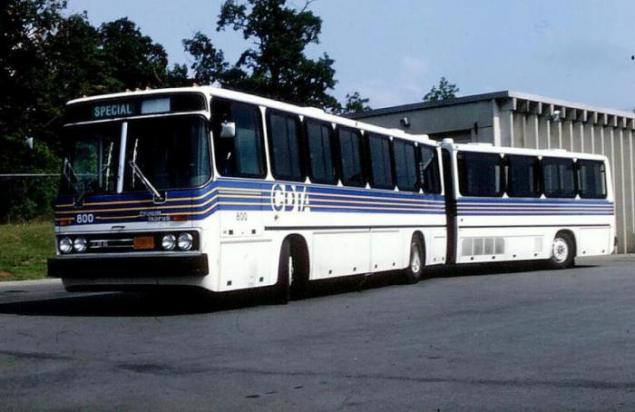
Despite the large number of American and American parts assembled buses do not have high reliability. There were a lot of complaints from customers on a variety of damage. Most of the complaints were for door opener and the windows and air vents. All buses ordered in Oregon needed additional repairs and modifications to the structure almost immediately after taking them to the line. Another claim was the lack of documentation in the English language, many blueprints were exclusively in Hungarian.
Beauty Icarus Canadian assembly.

After four years of operation Portland transport company sued the manufacturer, claiming that he bears no warranty obligations under the contract and does not want to sell the car to repair, many of which were revealed quite serious defects - cracks in the frame, for example. Later, the suit was settled out of court, and the guarantee is extended until 1992.
In 1986, Crown Coach ceased to accept new orders for Crown-Ikarus, and the production of buses under the joint venture has been completed.
From 1986 to 1989 buses going along the same lines at the Canadian plant Orion, and went under the name Orion III or Orion-Ikarus. It was produced 256 buses for transport systems in Toronto and Ottawa, who worked on urban routes until 2003. The company is now owned by Orion International concern Daimler AG. By the way, Orion buses of different generations (Ikarus not) make up a large part of the modern New York bus fleet.

Orion III in Ottawa.

In 1989, Icarus is back on the market as a company Ikarus USA, which after a series of reforms in 1996, the company became the North American Bus Industries (NABI). The company still exists today, and successfully produces buses for the US market, and uses the same scheme of production, which in the past - a body made at a factory in Hungary, and the final assembly is carried out in the United States.

Today, once again came across a photo that made me strongly think - What did the bus from socialist Hungary in the streets of San Francisco in 1978? It was found that almost the same as that on the streets of New York, Portland, Milwaukee, Houston and even Honolulu - carrying passengers. Strange but true - so familiar to us from childhood accordion buses Ikarus brand in the 80s made in the United States and Canada.

Ikarus produced for the US market from 1980 to 1986, the joint venture created by the Hungarian Ikarus and American Crown Coach Corporation. While Icarus was one of the largest producers of passenger buses in the world (13 000 units per year) and released three times more cars than all US companies combined. For the US market produced 286 Ikarus made on the basis of 280-th model, known, perhaps, every resident of Russia. It was sredneprivodny articulated bus is popularly referred to as the "accordion". There were produced 243 bus models Crown-Ikarus 286.
Here I have a little get well - in San Francisco and New York, the bus only demonstrated and passed the tests in regular passenger transport was not used. This is a demo bus, the Hungarian assembly in San Francisco in 1978. He is the first picture.

Agreement on the establishment of the joint venture was signed by the companies in 1978, and the first order for the Hungarian bus was placed in November 1979. The body and chassis were produced at a factory in Hungary, while all other components including the engine, transmission, axles, brakes and so on were US-made. Only the first batch of buses was almost entirely collected in Hungary sent from American components. Then the assembly line at the plant was organized by Crown Coach in California. On buses install special equipment for planting-disembarkation of persons with disabilities. A large number of US parts and assembly production in the United States summed buses under the law, "Buy American", by which all procurement carried out by the budget, preference was given to goods produced in the United States.
Ikarus wanted also to organize production and sale of trolleys on the basis of the 286th model, and even sent to the United States two test sample 280T3, which were shown in 1980 and 1981 in San Francisco, Seattle and Mexico City, but no order for them not arrived, and production was not organized, and the prototypes back to the factory in Hungary.
Ikarus 280T3 on trial in San Francisco.

On the buses set Cummins engines and automatic handed Allison. 55 machines were installed transmission Voith. In the mid-80s, to reduce operating costs, engines are replaced by Detroit Disel. Buses are available in two versions - 17 and 18 meters long, with two or three doors. The maximum number of seats was 73. Unlike the bus comes to the USSR seats were installed in two rows on each side.
Ikarus American assembly (to Portland) on trial in New York, in the territory of the bus fleet of Queens Transit in 1981.

He's on the video.
The buses were purchased by transport companies from nine different states. The first 15 vehicles were delivered in 1980 in Louisville, Kentucky.

The largest batch of 87 vehicles was ordered by the transport company in Portland, Oregon. They put the customer in 1981-82. Portland was the only city where delivered three door versions.

In Houston, Texas, it was purchased 50 buses Crown-Ikarus.

In Milwaukee, Wisconsin, sent 40 cars.

Buses also delivered to the county of Santa Clara, California - 15; San Mateo, CA - 10; Jacksonville, FL - 9; Albany, NY - 8; Honolulu, Hawaii - 8. After the sale of the transport companies in the secondary market, there were buses and in other US cities.
Bus from Honolulu, Hawaii.

Crown-Ikarus in Albany, New York.

Despite the large number of American and American parts assembled buses do not have high reliability. There were a lot of complaints from customers on a variety of damage. Most of the complaints were for door opener and the windows and air vents. All buses ordered in Oregon needed additional repairs and modifications to the structure almost immediately after taking them to the line. Another claim was the lack of documentation in the English language, many blueprints were exclusively in Hungarian.
Beauty Icarus Canadian assembly.

After four years of operation Portland transport company sued the manufacturer, claiming that he bears no warranty obligations under the contract and does not want to sell the car to repair, many of which were revealed quite serious defects - cracks in the frame, for example. Later, the suit was settled out of court, and the guarantee is extended until 1992.
In 1986, Crown Coach ceased to accept new orders for Crown-Ikarus, and the production of buses under the joint venture has been completed.
From 1986 to 1989 buses going along the same lines at the Canadian plant Orion, and went under the name Orion III or Orion-Ikarus. It was produced 256 buses for transport systems in Toronto and Ottawa, who worked on urban routes until 2003. The company is now owned by Orion International concern Daimler AG. By the way, Orion buses of different generations (Ikarus not) make up a large part of the modern New York bus fleet.

Orion III in Ottawa.

In 1989, Icarus is back on the market as a company Ikarus USA, which after a series of reforms in 1996, the company became the North American Bus Industries (NABI). The company still exists today, and successfully produces buses for the US market, and uses the same scheme of production, which in the past - a body made at a factory in Hungary, and the final assembly is carried out in the United States.





